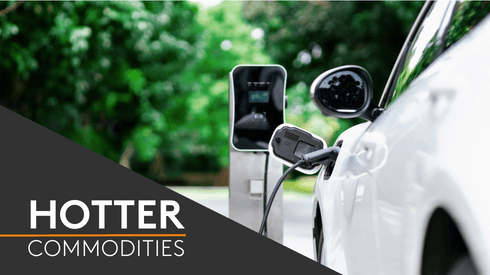Last month, Fastmarkets launched assessments for the aluminium P1020A premium, cif Mexico; the aluminium 6063 extrusion billet premium, cif Mexico and the aluminium low-carbon differential P1020A, cif Mexico.
Fastmarkets is currently the only IOSCO-compliant price reporting agency (PRA) offering a complete suite of aluminium premiums in Mexico. It is also the first to introduce low-carbon aluminium pricing to the Mexican market.
Several dynamics led to this launch, including a growing Mexican aluminium market, a lack of transparency and consequent market demand, and changing trade dynamics.
Growing Mexican aluminium market
Mexico is currently well-positioned in the aluminium market and has been receiving foreign investments. Aluminium is a key raw material for Mexico’s booming automotive, packaging and construction sectors. So, these launches reflect a growing and liquid Mexican aluminium industry.
According to data from the Mexican government, in the period from January to December 2024, foreign direct investment (FDI) from alumina and aluminium production and processing was $15.8 million — the highest since 2020, when it reached $21.3 million.
Market research and management consulting company Next Move Strategy Consulting (NextMSC) highlighted that the increasing consumption of packaged goods and the presence of one of the largest automotive manufacturing sectors are driving up aluminium demand in Mexico, according to research published in February. Mexico’s aluminium market was valued at $3.86 billion in 2023, and is expected to reach $6.36 billion by 2030.
“Mexico has emerged as a major player in the automotive manufacturing sector, drawing substantial investments from global automakers. As global automakers invest heavily in Mexico, the need for aluminium-intensive designs has surged. This demand is driven by the industry’s focus on fuel efficiency and lightweighting initiatives, which require substantial quantities of aluminium for vehicle components,” according to NextMSC’s research.
Packaging and consumer goods drive aluminium demand
The packaging and consumer goods sector in Mexico is also a major driver of aluminium demand. As the consumption of packaged products rises and consumer preferences shift toward convenience, the need for aluminium in packaging has increased significantly, according to the research.
The Mexican aluminium industry has benefited from recent nearshoring efforts. In 2023, for example, the expectation was that Mexico’s aluminium sector was going to have double-digit growth due to nearshoring opportunities and investments announced by automakers Tesla and BMW, according to a BNamericas article published at the time.
In another example, automaker Stellantis said in August that it was looking for aluminium supply in Mexico. The company wanted to encourage all the steps of production to take place in the country.
“We want the added value to be placed in Mexico. We don’t want the material to arrive in Mexico, just be painted and be targeted as Mexican. We want to verticalize the entire aluminium chain in the country. We know that Mexico does not produce primary aluminium, so we are more flexible, but we insist that Mexico needs to add value to the domestic products,” Raúl Ibarra, Stellantis’ new sourcing supplier, said during the aluminium conference Aluméxico in Monterrey, Mexico, on August 29.
Many market participants say that Mexico is known as the “US factory” — more and more companies are buying units in Mexico, importing primary aluminium to the country, making value-added products (VAP) and secondary alloys domestically and selling them to different countries, mainly the US.
Unwrought aluminium exports
According to data from the Mexican government, 72.7% of Mexico’s unwrought aluminium exports were sent to the US in 2023. Additionally, the US International Trade Administration (ITA) reports that between January 2024 and January 2025, Mexico ranked as the eighth-largest supplier of unwrought aluminium to the US. During this period, Mexico exported 26,507.29 tonnes, contributing to the total 4,025,293.13 tonnes imported by the US.
Mexico does not engage in primary aluminium production due to the absence of domestic ore reserves. Consequently, imported primary aluminium serves as the primary feedstock for downstream manufacturing processes across various industries, NextMSC highlighted.
“Mexico’s significant demand for aluminium products further reinforces its dominance in the market,” NextMSC said.
Therefore, Mexico’s diverse sourcing landscape, spanning the US, India, the Middle East, Africa, Vietnam, Indonesia and Canada, among others, presents an urgent need for accurate pricing tools.
Mexico, along with India and Indonesia, is among the fastest growing aluminium markets, and the country is currently presenting itself as a great opportunity for investment.
“This is a moment of high visibility for Mexico,” a market participant said on the sidelines of the Harbor Aluminum Summit, which took place in Chicago on June 4-6.
Lack of transparency, consequent market demand
After a period of consultation with the main participants in the Mexican market, including sellers, buyers and traders, Fastmarkets noticed the need for transparency and price references in the country.
“The US-Mexico total trade in 2024 alone is north of $500 billion per year. Given its strategic importance, greater clarity over the price paid for goods and services imported from Mexico is extremely important. In light of the ongoing tariff uncertainty, a trusted benchmark and fair assessment makes a great difference when it comes to business negotiations,” Fastmarkets senior analyst Andy Farida said.
Research and engagement led by Fastmarkets revealed a strong call from industry stakeholders for greater transparency and references in aluminium pricing.
“We are super happy that Fastmarkets is launching premiums for Mexico. I’ve been asking PRAs for premiums for Mexico for years, and you are the ones finally doing it,” a producer told Fastmarkets.
Changing trade dynamics
On April 2, US President Donald Trump signed an executive order implementing a new “reciprocal tariff” policy that would impose additional duties on imports from most global trading partners, beginning at 10%, with higher rates for specific nations.
The 10% universal tariffs took effect on Saturday April 5, followed by the reciprocal duties scheduled to be implemented on Wednesday April 9. However, on April 9, Trump decided to impose 90-day pause on the reciprocal tariffs.
The executive order published on April 2, which declares a national emergency over “large and persistent” US trade deficits, specifically exempts “certain critical minerals” through Section 3(b).
In the case of aluminium, the White House’s fact sheet said that the metal is already subject to 25% Section 232 tariffs, and so will not face reciprocal tariffs.
“In the case of Mexico, there are no additional tariffs…that is good for the country,” Mexican President Claudia Sheinbaum said in a daily press conference on Thursday April 3.
On the other hand, the 25% tariff is still valid on Mexican aluminium imports to the US, which is creating a new dynamic in the region.
Mexico most affected by tariffs in Latin America
Mexico, as a major supplier of aluminium scrap and alloy to the US, might be the most affected by the tariffs in Latin America.
“We are worried about the [tariff] situation with Trump. We are trying to see if we can look for new markets to sell, but at the same time, exporting to Europe is very expensive. So now we are reviewing different scenarios,” a Mexican aluminium producer told Fastmarkets.
Recent developments, such as US tariffs on aluminium imports, present an urgent need for accurate pricing tools.
China, for example, redirected much of its aluminium exports to Mexico after Trump lifted tariffs to the latter country in 2017. Some of the metal is processed in Mexico before being exported to the US, so that trade route may shrink with a tariff on Mexican imports.
In its last monetary decision, on March 27, the Central Bank of Mexico highlighted “escalating trade tensions and the intensification of geopolitical turmoil, and their possible impact on inflation, on the economic weakening, and on volatility in financial markets. The changes in economic policy by the new US administration have added uncertainty to the forecasts. Its effects could imply inflationary pressures on both sides of the balance.”
Geopolitical tensions, trade disruptions and price volatility expose Mexican producers to supply chain risks. These new challenges and dynamics will be captured by Fastmarkets’ new prices.
Current aluminium pricing
Fastmarkets assessed the fortnightly aluminium 6063 extrusion billet premium, cif Mexico at $400-450 per tonne on Tuesday April 8, unchanged from two weeks prior.
Meanwhile, the aluminium P1020A premium, cif Mexico was assessed at $390-410 per tonne, also unchanged in the same comparison.
“Before April 2, we’ve been hearing that there was little spot demand. Few transactions. Who was buying in Mexico are the players that really need material and want it because of some urgency,” a trader source said.
A Mexican producer told Fastmarkets: “Players in Mexico are not relieved. They are still worried, pressured, trying to understand the next steps. Besides, [London Metal Exchange prices] are dropping. Scrap dealers are also seeing decreases in exports.”
“The spot market for P1020 in Mexico is more robust because of lack of scrap availability, which is creating a better demand for P1020. Less of a spot market for billet. People only need it for specific reasons,” a second trader source said.
Low-carbon in North America
Fastmarkets assessed the monthly aluminium low-carbon differential P1020A, cif Mexico at $0 per tonne in its initial assessment on March 25.
There is an evolving marketplace for low-carbon aluminium in North America in general, which Fastmarkets has been monitoring since the launch of two low-carbon aluminium differentials for the US market in 2023. This trend is expected to continue to grow globally while the industry increasingly focuses on decarbonization.
The aluminium industry in Mexico heavily depends on the automotive and packaging industries — for which demand for low-carbon aluminium is particularly growing.
The growth of the green aluminium market presents numerous opportunities for buyers, traders and manufacturers. But despite the heightened focus on sustainability, many consumers in North America remain hesitant to pay a premium for greener products. Cost remains a key barrier, especially in price-sensitive markets.
On the other hand, the role of low-carbon aluminium differentials and premiums is becoming increasingly significant, to give references to the market as well as to educate the industry about green aluminium.
Follow discussions around decarbonizing the aluminium industry with the latest price trends, market insights and forecasts. Visit our dedicated low-carbon aluminium hub today to find out more.





